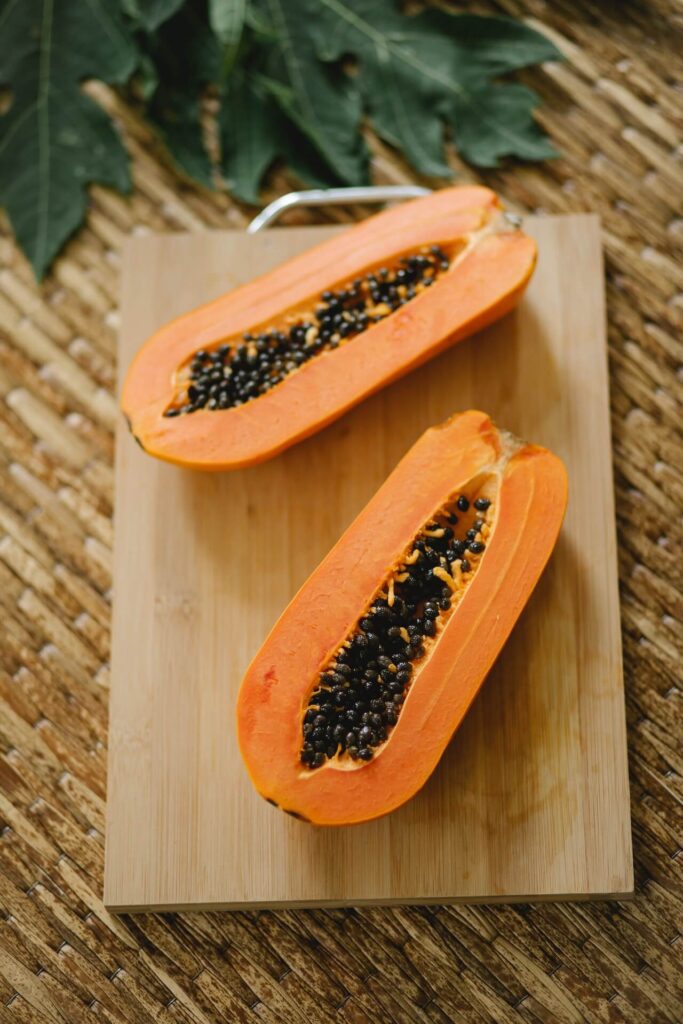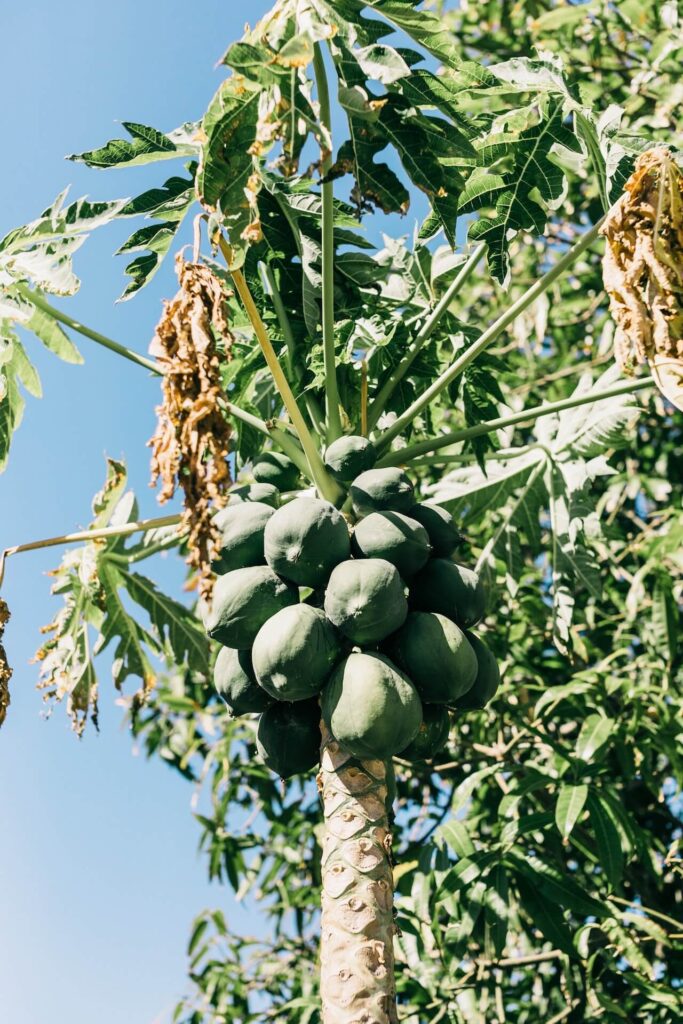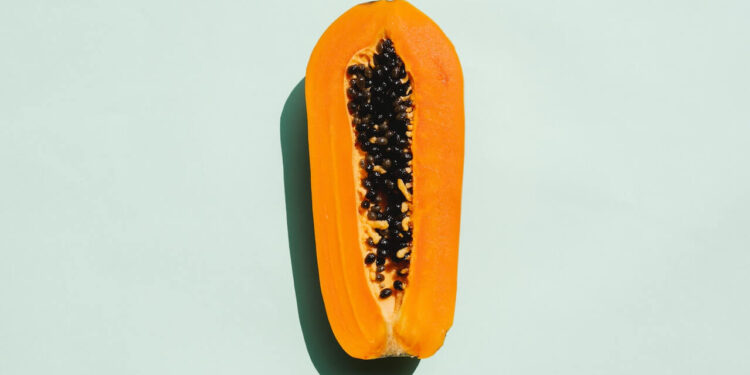The pawpaw fruit contains a significant amount of vitamin C, compared to the orange and banana. It is also a good source of riboflavin, a nutrient that is important in the metabolism of the body.
KAMPALA | NOW THEN DIGITAL — If you’ve never heard of the pawpaw fruit, you may be wondering what it is. The tropical fruit grows wild in 26 states, from Louisiana to Michigan, but is especially abundant in Appalachia.
- The pawpaw is a native North American fruit with a flavor reminiscent of bananas and mangos. Pawpaw trees grow well in our region and its fruit is one of the largest edible fruits in the continental U.S.
- Pawpaws are green on the outside and yellow or white on the inside. They are commonly grown for their tasty, nutritious flesh. While the pawpaw may not be commercially available, its sweet taste and mild tannins have made it a favorite of many foodies.
- Niacin is an essential nutrient found in pawpaw fruit. It is a low-calorie fruit that contains a high amount of vitamin C.
- This fruit also contains riboflavin and has nearly twice as much niacin as an orange. It is also low in cholesterol and contains several essential amino acids. Pawpaws are also rich sources of vitamin B6 and thiamine.
In this article, we’ll tell you how to grow the Pawpaw fruit for the health benefits and banana-like taste it offers. Plus, we’ll tell you whether or not this fruit is a viable crop for small-scale farmers.

Pawpaws are a tropical fruit
While pawpaws are not a common sight in typical grocery stores, they are growing in popularity among health-food enthusiasts and in Indigenous communities.
While they are a rather rare fruit, they are becoming more widely available, especially at late summer farmer’s markets. Their lack of availability is partly due to a lack of information and growers.
A shortage of information and resources can hinder the growth of pawpaw trees, making them an unlikely crop for many people.
Despite their small size, pawpaws are the largest edible fruit native to North America. According to Bruce Bordelon, a professor at Purdue University, the oldest varieties of the pawpaw fruit originated in Indiana. Their diameter varies from one to three inches and range from three to seven inches in width.
Although “pawpaw” is the Spanish name for the fruit, its Native American name is assemina. Native People in North America first cultivated pawpaws before 1541. The bark of the pawpaw tree was also used to make rope and cloth.
While the pawpaw is rarely found in supermarkets, you can try it at local farmers markets. It’s a fruit that grows naturally in some regions and has a sweet, mango-citrus flavor.
However, its skin and seeds are highly toxic and should never be eaten. This fruit is best eaten in its early autumn season, so don’t wait too long to try it. There are also some great recipes using pawpaw.
Pawpaws are an American native that grows on the largest fruit tree native to the continent. They are primarily found in the east, from southern Canada to Florida.
They aren’t as common today as they once were, but they add a pleasantly tropical flavor to banana recipes. They are a delicious alternative to banana. If you’re looking for an alternative to bananas, you’ll love pawpaws.
They are a good source of vitamin C

Despite being a small fruit, pawpaw is a rich source of vitamin C. Pawpaw fruit is not related to papaya, but they have a similar soft texture and sweet flavor.
Like a rugby ball, papayas have red flesh inside, while pawpaws have yellow flesh, are slightly larger, and are rounder. They are often added to recipes as a sweet treat, such as ice cream, sorbet, or jam.
In addition to being a good source of vitamin C, pawpaw fruit also contain phosphorus, thiamine, and a small amount of potassium.
Pawpaws contain significant amounts of various essential minerals. A single serving of pawpaw fruit provides approximately 31 percent of the daily value for vitamin C.
This fruit also contains trace amounts of manganese, iron, and magnesium. Vitamin C is a powerful antioxidant that protects the body from free radical damage.
It is also needed for forming collagen and repairing wounds. It is therefore important to consume pawpaw fruit regularly to reap the benefits.
When in season, pawpaw fruit are delicious and nutritious. The best ones are ripe from August to October. You can find them at farmers’ markets throughout the mid-Atlantic region.
You can also purchase them directly from the trees to ensure the freshest taste. Picking pawpaw fruit is similar to choosing a peach: avoid bruised or black spots. They should also have a slight give to them.
The pawpaw is a native North American fruit. It is considered the largest edible fruit in the United States. Eaten out of hand, pawpaws are typically eaten raw or unprocessed.
Research suggests that pawpaw fruit can improve the health of your skin, reduce your risk of cancer, and heal inflammation. Additionally, it contains several minerals and vitamins. It is an excellent source of vitamin C.
They have a banana-like taste
The native to North America, the pawpaw is a tasty tropical fruit with a banana-like taste. Growing from the mid-Atlantic to southern Canada and even as far west as the Midwest, pawpaws are delicious and nutritious.
The fruit is high in protein and contains vitamin A and C, as well as antioxidants and several essential minerals. Early settlers often confused pawpaw with papaya, but the fruit’s name dates back to Hernanado de Soto’s 1540 Mississippi expedition.
Pawpaws are best eaten raw or while still green, although they can be cooked. While pawpaws are not as sweet as bananas, their taste is a delicious blend of tropical fruits.
In addition to bananas, pawpaws are often used as a substitute in baking. Whether you use pawpaws in baking or making jams, a pawpaw has a banana-like taste and texture.
If you haven’t tasted a pawpaw yet, you’re in for a treat. Known as the “biggest native fruit in the United States,” pawpaws are hard to keep and transport. However, you can still enjoy pawpaws even if you can’t find them in your local grocery store.
The fruit’s delicious flavor and health benefits have made pawpaw a sought-after commodity in recent years. It is the largest native fruit in North America and is native to a wide region of eastern and southern U.S., including the Atlantic and Pacific.
The flesh of a pawpaw is creamy and custard-like. When ripe, pawpaws display a yellowish tint. The flesh is soft and custard-like. Its unique sweet taste and soft texture make it a popular snack.
It also contains a slight bitter aftertaste, which is similar to that of a banana. There are numerous benefits of pawpaws, though: a 100-gram serving of pawpaw contains double the amount of vitamin C found in a banana.
They are a viable crop for small-scale farmers

If you’re looking for a perennial crop with a wide range of uses, pawpaw fruit may be a good choice. It has a varied market, requires little pest control, and is a good candidate for growing on a small farm. Its potential medicinal properties are also worth investigating.
Pawpaw contains anti-cancer compounds known as anonaceous acetogenins. The pawpaw fruit’s popularity has even shifted to international markets.
Growing pawpaws on a small farm will require mowing, particularly in damp, eastern regions. The fruit is best sold frozen, although the seeds are edible.
Small-scale growers may also want to consider adding value-added products such as ice cream and chutney. Moreover, the seeds make excellent jewelry.
However, farmers should research local cottage food laws before planting pawpaws on their farm. To help them navigate the legal issues, farmers can obtain information from the Ohio Pawpaw Growers Association. The organization offers 29 handouts for farmers.
The climate in the eastern United States is changing. The growing season is expected to be longer in New England than in other parts of the country, and the demand for late-season fruit will increase.
Moreover, climate projections suggest that pawpaws will be in demand for more than a decade, which will make them a lucrative crop for small-scale farmers. For small-scale farmers, pawpaws are also an excellent crop for low-cost farmers.
The pawpaw tree can be grown from seed or grafted. The seed has genetic benefits, but grafted pawpaw trees are more common. A pawpaw tree grown from seed has useful rootstock, but should not be confused with the more southern roots.
Native rootstock from these regions can be used as a graft rootstock in northern nurseries. And it’s easier to find pawpaw seeds in northern regions than in Southern ones.
They are a good substitute for bananas
The flavor of pawpaw is quite unique, resembling a blend of pears, pineapple, and banana, with a yeasty floral aftertaste.
Typically eaten raw, pawpaws are also a great substitute for bananas in desserts. The texture is similar to a banana’s, and the fruit can be substituted for bananas in nearly any recipe.
The pawpaw fruit has a short shelf life, but it will last for up to 3 weeks with proper refrigeration. Unlike bananas, pawpaws contain significant amounts of vitamin C, magnesium, and iron.
They also contain very few calories, so pawpaw fruit is a healthy alternative to bananas. The main drawback to pawpaw is its short shelf life. While apples keep for months, pawpaws last only a couple of days.
Plantains are another great banana substitute. In general, plantains have thicker skins and are larger than bananas. Although they come from the same family of Musa, they have very different flavours.
Plantains are sweet but lack the banana flavor. The best way to enjoy plantains is fried, since they caramelize to a crispy edge. The fruit is also great for smoothies.
There are also many other fruit substitutes that work well as bananas. When you’re looking for a banana substitute, try pawpaw fruit or another tropical fruit.
Although it tastes like a banana, pawpaw tastes very similar to an apple. Compared to bananas, pawpaws have a milder flavor and are also easier to work with in baking.
You can use pawpaw in place of banana in your favorite recipes, such as muffins and cookies. And when you’re in the mood for a smoothie, pawpaw is an excellent substitute.
We hope you enjoyed reading our article about ‘pawpaw fruit’. Please feel free to share, this may be helpful to others.
You’re reading nowthendigital.com — which breaks the news about Uganda, Kenya, Nigeria, South Africa and the rest of the world, day after day. Be sure to check out our homepage for all the latest news, and follow NOW THEN DIGITAL on YouTube, Google News, Medium, Twitter, Reddit, Pinterest and Flipboard to stay in the loop.

















